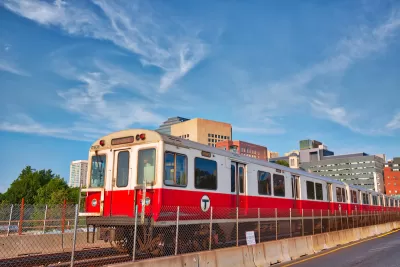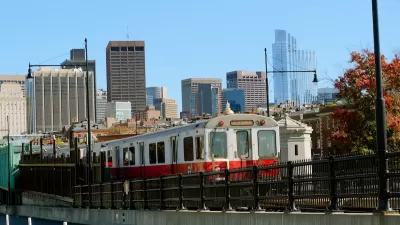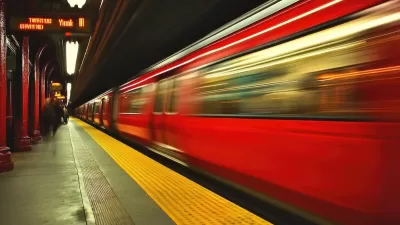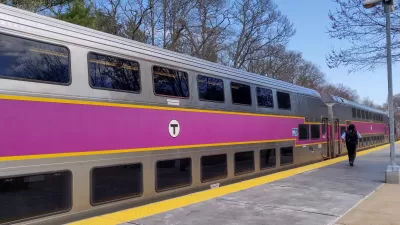The ‘T’ is reworking its schedule to offer more reliable and flexible service, including more midday and weekend trains.

Boston’s commuter rail system has recovered as much as 96 percent of pre-pandemic ridership, reports Daniel C. Vock in Route Fifty, far outpacing most commuter rail agencies around the country.
“There are a lot of factors at play, but one that sets Boston apart is the extent to which it has reworked its service to better serve people traveling in the middle of the day, in the evening and on weekends.” Boston’s success validates the growing movement to readjust transit schedules and routes to better serve post-pandemic transportation needs. In many cases, these needs were already there, borne by largely ignored groups such as transit-dependent working women with children.
The Massachusetts Bay Transportation Authority (MBTA) owns 12 commuter rail lines that span almost 400 miles. “Significantly, it owns most of those tracks, while many other commuter rail agencies have to use tracks owned by freight railroads for all or most of their routes.”
According to the MBTA, “The goal is to get trains on a clock-face schedule, so people know what time their trains will leave—say, 10 minutes past the hour—without having to look it up.” The agency is also adding more trips, particularly during midday and nights and weekends.
FULL STORY: Boston-area commuter rail bounces back, while other agencies lag

Study: Maui’s Plan to Convert Vacation Rentals to Long-Term Housing Could Cause Nearly $1 Billion Economic Loss
The plan would reduce visitor accommodation by 25,% resulting in 1,900 jobs lost.

North Texas Transit Leaders Tout Benefits of TOD for Growing Region
At a summit focused on transit-oriented development, policymakers discussed how North Texas’ expanded light rail system can serve as a tool for economic growth.

Why Should We Subsidize Public Transportation?
Many public transit agencies face financial stress due to rising costs, declining fare revenue, and declining subsidies. Transit advocates must provide a strong business case for increasing public transit funding.

How to Make US Trains Faster
Changes to boarding platforms and a switch to electric trains could improve U.S. passenger rail service without the added cost of high-speed rail.

Columbia’s Revitalized ‘Loop’ Is a Hub for Local Entrepreneurs
A focus on small businesses is helping a commercial corridor in Columbia, Missouri thrive.

Invasive Insect Threatens Minnesota’s Ash Forests
The Emerald Ash Borer is a rapidly spreading invasive pest threatening Minnesota’s ash trees, and homeowners are encouraged to plant diverse replacement species, avoid moving ash firewood, and monitor for signs of infestation.
Urban Design for Planners 1: Software Tools
This six-course series explores essential urban design concepts using open source software and equips planners with the tools they need to participate fully in the urban design process.
Planning for Universal Design
Learn the tools for implementing Universal Design in planning regulations.
Ascent Environmental
Borough of Carlisle
Institute for Housing and Urban Development Studies (IHS)
City of Grandview
Harvard GSD Executive Education
Toledo-Lucas County Plan Commissions
Salt Lake City
NYU Wagner Graduate School of Public Service





























